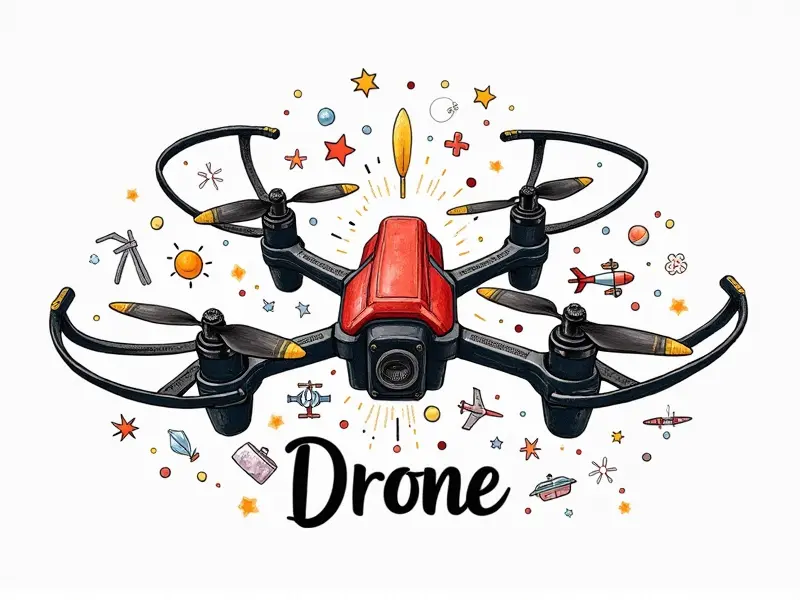What causes drone frame damage?

Drone frame damage can occur due to a variety of factors, ranging from environmental conditions and user error to mechanical issues. Understanding the common causes of drone frame damage is crucial for maintaining your equipment and ensuring its longevity.
Common Causes of Drone Frame Damage
The integrity of a drone's frame is critical for its performance and safety. Several factors can lead to structural failures, including:
- Impact with Obstacles: Collisions with trees, buildings, or other objects are frequent causes of damage.
- Improper Landing Techniques: Hard landings or landing in uneven terrain can cause fractures and breaks.
- Misalignment of Components: Loose screws, bent propellers, and misaligned motors can weaken the frame over time.
Why Do Drones Get Damaged?
Drones are susceptible to damage due to their complex mechanical nature and operational requirements. Here’s a deeper look into why drones often suffer from structural issues:
- User Error: Inexperienced pilots may inadvertently cause crashes by flying too close to obstacles or losing control.
- Maintenance Neglect: Lack of regular maintenance and inspections can lead to unnoticed wear and tear, increasing the risk of damage.
- Environmental Factors: Harsh weather conditions like strong winds, rain, and sandstorms can stress the frame beyond its limits.
Top Reasons for Drone Crashes
The leading causes of drone crashes include:
- Lack of Flight Experience: Novice pilots often underestimate the challenges of flying drones, especially in complex environments.
- Battery Issues: Low battery levels can cause sudden loss of power and control, leading to unexpected falls or crashes.
- Navigational Errors: GPS signal interference, incorrect settings, or malfunctioning sensors can lead to navigation errors and crashes.
Preventing Drone Frame Breakage
To prevent drone frame breakage, it's essential to follow these preventive measures:
- Proper Assembly: Ensure all components are securely fastened before each flight.
- Frequent Inspections: Regularly check the frame for signs of wear and tear or damage.
- Flight Planning: Plan your flights carefully to avoid obstacles and fly within safe distances from structures.
Identifying Risk Factors for Drone Injuries
Risk factors that contribute to drone injuries include:
- High Altitude Flights: Flying at high altitudes increases the likelihood of losing control due to wind gusts or GPS signal loss.
- Nighttime Operations: Reduced visibility during nighttime flights can lead to accidental crashes into unseen obstacles.
- Limited Battery Capacity: Operating drones with insufficient battery capacity limits flight duration and increases the risk of unexpected landings.
How to Protect Your Drone from Crashes
To protect your drone from crashes, consider these strategies:
- Use Protective Covers: Install protective covers or guards on propellers and other vulnerable parts of the frame.
- Fully Charge Batteries: Ensure batteries are fully charged before each flight to prevent unexpected power loss.
- Practice Safe Flying Techniques: Follow safe flying practices, such as maintaining a steady altitude and avoiding sudden maneuvers.
Avoiding Common Drone Crash Scenarios
To avoid common drone crash scenarios, it’s important to be aware of the following situations:
- Obstacle-Free Flight Zones: Choose flight zones with minimal obstacles and clear lines of sight.
- Battery Management: Monitor battery levels closely during flights to avoid running out of power mid-flight.
- Sensor Calibration: Regularly calibrate sensors to ensure accurate navigation data, reducing the risk of navigational errors.
Understanding Why Drones Get Damaged Often
Drones are prone to damage due to their mechanical complexity and operational demands. Here’s a detailed look at why drones often suffer from structural issues:
- Mechanical Stress: The constant movement of propellers and motors puts significant stress on the frame, leading to wear over time.
- User Neglect: Pilots may overlook maintenance requirements or fail to follow safety guidelines, increasing the risk of damage.
- Environmental Hazards: Harsh weather conditions and exposure to elements can weaken the frame’s integrity, making it more susceptible to damage.
Drone Safety Tips: Preventive Measures Against Accidents
To enhance drone safety and prevent accidents, follow these tips:
- Regular Maintenance: Perform routine maintenance checks to identify potential issues before they become critical.
- Skill Development: Continuously improve your piloting skills through training and practice sessions.
- Risk Assessment: Conduct thorough risk assessments for each flight, identifying potential hazards and planning accordingly.
Frequent Causes of RC Quadcopter Frame Failures
The most common causes of frame failures in remote-controlled quadcopters include:
- Impact Damage: Direct hits from collisions with hard surfaces or objects.
- Mechanical Wear: Gradual wear and tear due to prolonged use without maintenance.
- Landing Mishaps: Hard landings on uneven terrain or improper landing techniques.
Factors Affecting Drone Frame Durability
The durability of a drone frame is influenced by several factors, including:
- Material Quality: High-quality materials such as aluminum and carbon fiber offer better resistance to damage.
- Manufacturing Standards: Adherence to strict manufacturing standards ensures the structural integrity of the frame.
- User Handling: Proper handling and care during assembly, flight, and storage significantly impact durability.
Conclusion
Maintaining a drone's frame requires vigilance and adherence to safety guidelines. By understanding the common causes of damage and implementing preventive measures, you can extend the life of your drone and ensure safe operations. Regular maintenance, careful planning, and awareness of environmental risks are key to protecting your investment.

